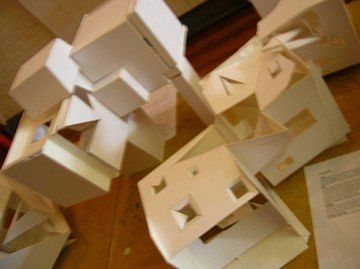

Fall 2007
Studio with Rokshana Kahn
The focus of the semester was the exploration of light and shadows, and how both worked together to discover a purpose for a space. Cubes were designed to give the area a set boundary, but by adding or taking away from the cube’s solid walls space began to emerge. Six individual cubes were made to test different techniques freeing up space. From there the assignment was directed towards the creation of spaces for a painter, poet, and musician. Each room was to embody the person within, and in the end the three cubes had to connect in a smooth transition. The goal of establishing a room through addition or subtraction contributed to setting the mood.
Status: School Project
Location: Lexington, KY, US